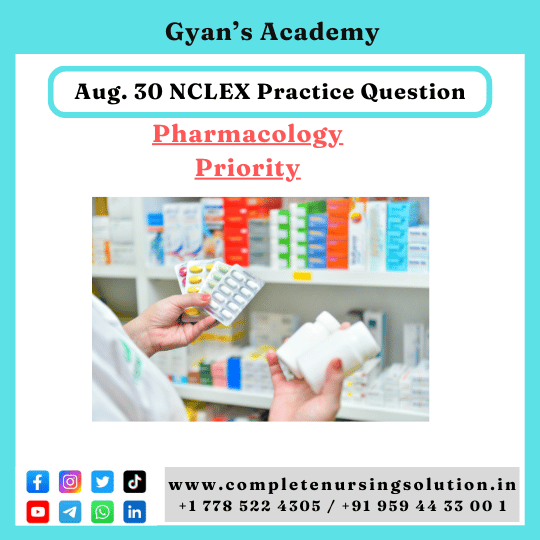Newborns at increased risk for hypoglycemia after birth include those who are large or small for gestational age, whose mothers have diabetes, or who were born at the late preterm age. Asymptomatic hypoglycemia in newborns with blood glucose (BG) <35 mg/dL (<1.94 mmol/L) if age 4-24 hours or <25 mg/dL (<1.39 mmol/L) if age <4 hours should be initially treated with feeding; an exclusively breastfed newborn should receive breast milk when possible (Option 2).
Feeding the newborn is a simple, noninvasive method of increasing and stabilizing BG.
(Option 1) IV glucose is not first-line treatment for asymptomatic hypoglycemia. IV glucose is indicated for newborns who do not tolerate oral feedings, who are symptomatic (ie, lethargic, jittery), or whose BG does not increase with feeding.
(Option 3) The priority is to stabilize BG, which can be done by initiating the mother's desired feeding method. Obtaining a prescription for formula supplementation (ie, via cup or spoon) may be necessary if breastfeeding is not adequate.
(Option 4) An ideal BG for the newborn is ≥40-45 mg/dL (2.2-2.5 mmol/L). BG <40-45 mg/dL should be confirmed with a plasma blood sample. Nevertheless, feeding the newborn may be initiated without waiting for a plasma BG level.
Educational objective: Asymptomatic hypoglycemia in newborns with blood glucose <35 mg/dL (<1.94 mmol/L) if age 4-24 hours or <25 mg/dL (<1.39 mmol/L) if age <4 hours should be initially treated with feeding. Feeding is a simple, noninvasive method of increasing and stabilizing blood glucose.
Newborns at increased risk for hypoglycemia after birth include those who are large or small for gestational age, whose mothers have diabetes, or who were born at the late preterm age. Asymptomatic hypoglycemia in newborns with blood glucose (BG) <35 mg/dL (<1.94 mmol/L) if age 4-24 hours or <25 mg/dL (<1.39 mmol/L) if age <4 hours should be initially treated with feeding; an exclusively breastfed newborn should receive breast milk when possible (Option 2).
Feeding the newborn is a simple, noninvasive method of increasing and stabilizing BG.
(Option 1) IV glucose is not first-line treatment for asymptomatic hypoglycemia. IV glucose is indicated for newborns who do not tolerate oral feedings, who are symptomatic (ie, lethargic, jittery), or whose BG does not increase with feeding.
(Option 3) The priority is to stabilize BG, which can be done by initiating the mother's desired feeding method. Obtaining a prescription for formula supplementation (ie, via cup or spoon) may be necessary if breastfeeding is not adequate.
(Option 4) An ideal BG for the newborn is ≥40-45 mg/dL (2.2-2.5 mmol/L). BG <40-45 mg/dL should be confirmed with a plasma blood sample. Nevertheless, feeding the newborn may be initiated without waiting for a plasma BG level.
Educational objective: Asymptomatic hypoglycemia in newborns with blood glucose <35 mg/dL (<1.94 mmol/L) if age 4-24 hours or <25 mg/dL (<1.39 mmol/L) if age <4 hours should be initially treated with feeding. Feeding is a simple, noninvasive method of increasing and stabilizing blood glucose.




Good day! Do you know if they make any plugins to help with Search Engine Optimization? I’m trying to get
my website to rank for some targeted keywords but I’m not seeing very good gains.
If you know of any please share. Appreciate it!
I saw similar blog here: Change your life
I’m extremely impressed with your writing talents and also with the layout to your weblog. Is that this a paid theme or did you modify it your self? Either way stay up the excellent quality writing, it’s uncommon to peer a nice blog like this one nowadays. I like completenursingsolution.in ! It’s my: Fiverr Affiliate
I am extremely impressed with your writing skills as neatly as with the structure for your blog. Is that this a paid subject or did you modify it your self? Either way stay up the nice quality writing, it is uncommon to look a great blog like this one these days. I like completenursingsolution.in ! My is: Youtube Algorithm
Thanks for sharing. I read many of your blog posts, cool, your blog is very good.
Thank you for your sharing. I am worried that I lack creative ideas. It is your article that makes me full of hope. Thank you. But, I have a question, can you help me? https://accounts.binance.com/de-CH/register?ref=W0BCQMF1